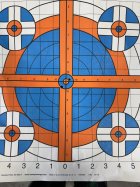Hey everyone. First off, I’m an avid big game hunting guy with many custom rifles, I shoot a lot to keep myself ready behind the trigger and I’ve taken a few long range shooting classes. I know a lot about bullets, velocity, ballistics etc. What I don’t know a ton about is reloading.
I’ve decided to jump in feet first on this reloading gig. I have a custom built 7 WSM that I love for out west hunting but obviously there is not any factory ammo available. I got lucky and scored 400 pieces of brand new Hornady brass and I’ve invested in a Forster press, dies, trimmer, new RCBS auto scale etc. I’ve watched YouTube videos out the ying yang. Bought a couple hand loading reference books. Also have a Labradar setup. I know what to do as far as loading the shell.
I’m ashamed to admit I’m a bit nervous about loading my first cartridges. I see so much info about starting low and working up, and then there’s so many different powders to chose from. Hornadys book gives the “best” load and bullet grain for the 7 WSM….so my question is, how many grains do I start under a confirmed load out of a Hornady/Nosler/ XYZ reference manual and how many cartridges do I need to try out before moving to the listed charge?
I don’t shoot competition, but I strive to shoot 1/4-1/2 MOA for longe range hunting purposes. How do I find the best powder for my gun accuracy without going thru 20 pounds of different powders? Or is that just part of reloading?
I’m sorry for the dumb questions and I’m sure lots of pros here are like “oh no another beginner” but I wouldn’t ask if I understood everything completely.
I thank everyone in advance for any tips!
I’ve decided to jump in feet first on this reloading gig. I have a custom built 7 WSM that I love for out west hunting but obviously there is not any factory ammo available. I got lucky and scored 400 pieces of brand new Hornady brass and I’ve invested in a Forster press, dies, trimmer, new RCBS auto scale etc. I’ve watched YouTube videos out the ying yang. Bought a couple hand loading reference books. Also have a Labradar setup. I know what to do as far as loading the shell.
I’m ashamed to admit I’m a bit nervous about loading my first cartridges. I see so much info about starting low and working up, and then there’s so many different powders to chose from. Hornadys book gives the “best” load and bullet grain for the 7 WSM….so my question is, how many grains do I start under a confirmed load out of a Hornady/Nosler/ XYZ reference manual and how many cartridges do I need to try out before moving to the listed charge?
I don’t shoot competition, but I strive to shoot 1/4-1/2 MOA for longe range hunting purposes. How do I find the best powder for my gun accuracy without going thru 20 pounds of different powders? Or is that just part of reloading?
I’m sorry for the dumb questions and I’m sure lots of pros here are like “oh no another beginner” but I wouldn’t ask if I understood everything completely.
I thank everyone in advance for any tips!











